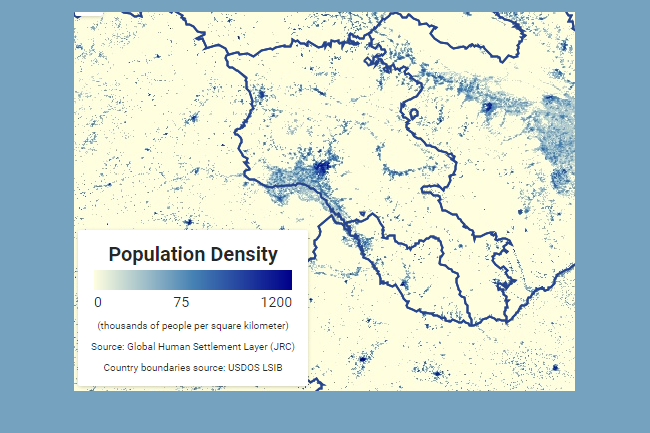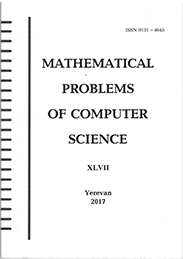| See All News | ||||||
The Armenian Data Cube: a successful collaboration for environmental sustainability The productivity of pasture land, the presence of pollutants, and the impacts of natural phenomena such as erosion or droughts can all be measured remotely using airborne or satellite-based sensors. But dealing with the huge amount of resulting data requires innovative solutions and technical support, which in turn require collaborative partnerships. Thanks to networks and services provided through the EU-funded EaPConnect project, and to the project’s Armenian partner IIAP participating in an Armenian-Swiss collaboration on ‘Data Cube’ technology, valuable information is being generated about the environment in Armenia. The Committee of Earth Observation Systems (CEOS) expects that more than 20 countries will implement Data Cube infrastructure by 2022. Armenia is one of few countries already developing a national-scale Data Cube. As one of the most industrialised post-Soviet countries it faces numerous environmental issues. Although the Armenian Data Cube is still under development, it has been successfully installed as a complete and up-to-date archive of Earth Observation data. Game-changing technology The Armenian Data Cube is a game-changing technology for remote sensing Earth Observation and national-level data visualisation, according to Shushanik Asmaryan, who is Head of the Geographic Information Systems and Remote Sensing Department at CENS (Center for Ecological-Noosphere Studies), which is part of the Armenian National Academy of Sciences (NAS). It promises continuous remote environmental monitoring that will enable Earth Observation scientists to determine trends, define present conditions, and inform the future. “We’ll be able to talk about the full benefits when tangible results are achieved. But the main advantage of the national-scale Data Cube is that it encompasses the free national e-infrastructures and Cloud capacities to bring together data, analytical methods and application insights that are essential to promote and accelerate social, economic, and environmental sustainability.” Shushanik Asmaryan (CENS) Long-term collaborative relationships CENS and IIAP – the Institute for Informatics and Automation Problems of NAS – are partners in ADC4SD – the Armenian Data Cube for Sustainable Development project, which is supported by the Swiss State Secretariat for Education, Research and Innovation. In this project, IIAP supports the storage, organisation, management and analysis of Earth Observation data. CENS and the third partner, the University of Geneva (UNIGE), provide the Earth Observation expertise. As the partners are keen to explain, this is a synergistic relationship. “CENS has been actively using IIAP services since 2013, because the computational capacities at CENS were not enough for processing and visualising data derived from satellites and unmanned aerial vehicles. In particular, IIAP’s cloud systems provide access to remote computing infrastructures for data storage, processing and visualisation. This paves the way to a long-lasting partnership between IIAP and CENS, to deploy distributed processing capacities for environmental geo-spatial and Earth Observation data in Armenia.” Shushanik Asmaryan Gregory Giuliani, Senior Lecturer in Earth Observations at UNIGE, and head of the Digital Earth Unit at GRID-Geneva agrees: “I think that this ADC4SD collaboration is extremely beneficial for the partners and is rooted in a long-lasting and friendly relationship between our three research centers and two countries that started almost 10 years ago. CENS and IIAP have benefited from our expertise and knowledge in Data Cube technology. And we have learned a lot from IIAP on High Performance Computing and distributed systems, and from CENS on environmental monitoring.” Gregory Giuliani (UNIGE) Benefits for Armenia Data Cube technology allows complex data to be explored in a multidimensional way. The Armenian Data Cube, anchored in the Swiss model’s best practices, uses the national e-infrastructure provided by IIAP, which consists of both communication and distributed computing infrastructures, providing a single computing environment where different advanced techniques such as Artificial Intelligence algorithms and High-Performance Computing can be used. “To transfer the necessary knowledge, it is vital to develop new capacities. This helps to achieve adoption, acceptance, and commitment to this new technology, which will increase the capacity to access and use Earth Observation data,” says Hrachya Astsatryan, the director of IIAP. “Thanks to the Data Cube technology, we are now able to do things that were almost impossible before. In particular, it has enabled us to move from simple diachronic (before/after) analysis to real-time-series analysis, allowing us to generate much more useful information on the dynamics of the various components of the environment. It also facilitates multi-sensor data fusion, to obtain richer information about land conditions and improve the accuracy of image classification,” says Gregory Giuliani. For Shushanik Asmaryan, the national Data Cube will be a vital tool in helping Armenia to achieve internationally recognised sustainable development goals (SDGs): “Reliable satellite-based monitoring of environmental SDGs requires Earth Observation systems with systematic acquisitions, free and accessible data, and unlimited high-performing computational resources in order to maintain, process, visualise and share the data at national scale. While greatly facilitating societal applications via the unlimited use of free satellite Earth Observation data, the Armenian Data Cube will support the achievement of SDGs at national level.” Shushanik Asmaryan |

|
|||||






CONTACTS
|
ABOUT INSTITUTE |
SCIENTIFIC ACTIVITY |
EDUCATION |





